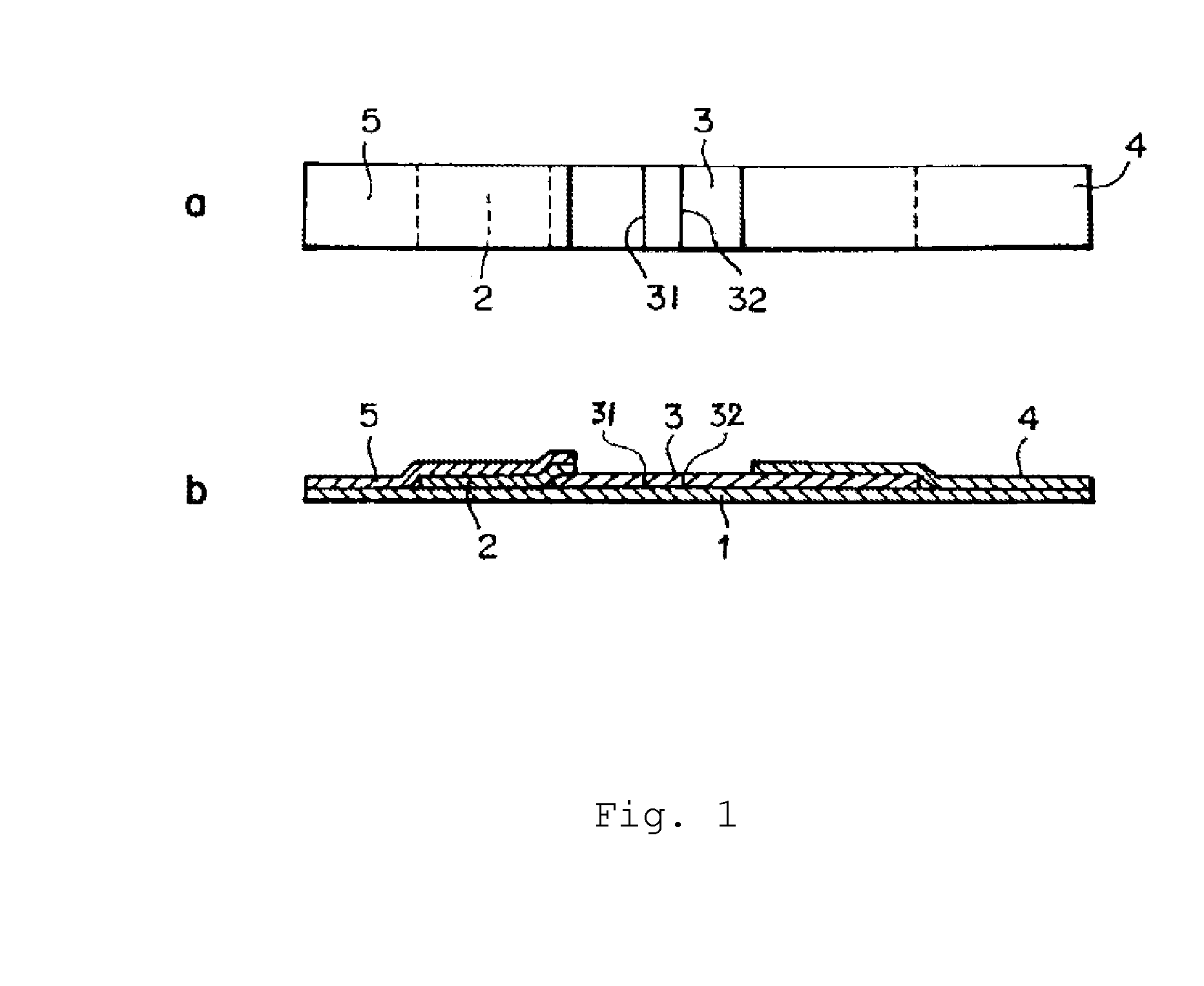Mycoplasma pneumoniae immunological detection method and kit
an immunological detection and kit technology, applied in the field of mycoplasma pneumoniae immunological detection method and kit, can solve the problems of slow proliferation of mycoplasma pneumoniae, -lactam antibiotics and cephem antibiotics, which are antibiotics, and take at least a week to obtain, so as to achieve rapid and specific diagnosis of mycoplasma pneumoniae.
- Summary
- Abstract
- Description
- Claims
- Application Information
AI Technical Summary
Benefits of technology
Problems solved by technology
Method used
Image
Examples
example 1
Expression and Purification of Recombinant P30 Protein
[0077]The amino acid sequence of P30 protein of Mycoplasma pneumoniae M129 strain was obtained from a database of DNA Data Bank of Japan (DDBJ). An extracellular region excluding a transmembrane domain, the amino acid sequence (AA74-274) set forth in SEQ ID NO: 2, was specified from the amino acid sequence of the P30 protein, and a gene sequence corresponding to the amino acid sequence was synthesized. A His-tag expression vector, pET302 / NT-His, was cleaved with a restriction enzyme, EcoRI, was then dephosphorylated using an alkaline phosphatase, and was mixed with the gene sequence, followed by a ligation reaction using DNA Ligation Kit Ver. 2 (Takara Bio Inc.). A recombinant P30 plasmid carrying the target gene was introduced into a recombinant protein-expressing host, E. coli BL (DE3) pLysS (Novagen). The host bacteria were cultured in an LB agar plate medium. The resulting colonies were cultured in an LB liquid medium. Subseq...
example 2
Production of Monoclonal Antibody Against Recombinant P30 Protein
[0078]The recombinant P30 protein prepared in Example 1 was used as an antigen for immunization to produce a monoclonal antibody against the recombinant P30 protein (hereinafter, referred to as anti-P30 antibody). The monoclonal antibody was produced in accordance with an ordinary method. The recombinant P30 protein (100 μg) was mixed with an equal amount of Complete Freund's Adjuvant (Difco). A mouse (BALB / c, 5 weeks old, Japan SLC, Inc.) was immunized with the mixture three times, and the spleen cells of the mouse were used in cell fusion using Sp2 / 0-Ag14 mouse myeloma cells (Shulman, et al., 1978). The cells were cultured in a culture solution prepared by adding L-glutamine (0.3 mg / mL), penicillin G potassium (100 unit / mL), streptomycin sulfate (100 μg / mL), and Gentacin (40 μg / mL) to Dulbecco's Modified Eagle Medium (DMEM) (Gibco) and also adding fetal calf serum (JRH) thereto in an amount of 10%. The cell fusion wa...
example 3
Preparation of Monoclonal Antibody
[0079]A mouse (BALB / c, retired, Japan SLC, Inc.), inoculated with 2,6,10,14-tetramethylpentadecane (Sigma) in advance, was intraperitoneally inoculated with the cloned cells, and the ascites was collected. The ascites was applied to a protein G column to purify a monoclonal antibody. The isotype of the produced monoclonal antibody was identified by Mouse Monoclonal Antibody Isotyping Reagents (Sigma).
[0080]Eventually, five clones of cells producing monoclonal antibodies against P30 protein were obtained. All these monoclonal antibodies were of IgG1 immunoglobulin isotype.
PUM
| Property | Measurement | Unit |
|---|---|---|
| time | aaaaa | aaaaa |
| length | aaaaa | aaaaa |
| width | aaaaa | aaaaa |
Abstract
Description
Claims
Application Information
 Login to View More
Login to View More - R&D
- Intellectual Property
- Life Sciences
- Materials
- Tech Scout
- Unparalleled Data Quality
- Higher Quality Content
- 60% Fewer Hallucinations
Browse by: Latest US Patents, China's latest patents, Technical Efficacy Thesaurus, Application Domain, Technology Topic, Popular Technical Reports.
© 2025 PatSnap. All rights reserved.Legal|Privacy policy|Modern Slavery Act Transparency Statement|Sitemap|About US| Contact US: help@patsnap.com

